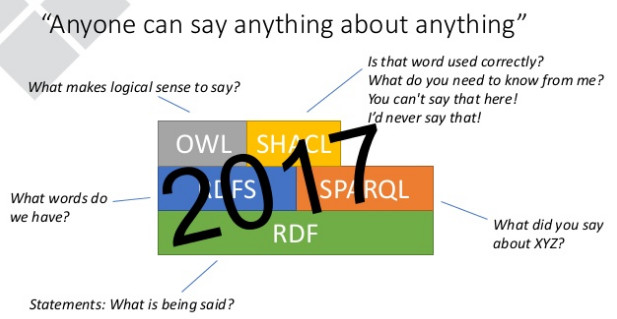I recently tweeted that the ZDNet article Back to the future: Does graph database success hang on query language? was the best overview of the graph database world(s) that I’d seen so far, and I also warned that many such “overviews” were often just Neo4j employees plugging their own product. (The Neo4j company is actually called Neo Technology.) The most extreme example of this is the free O’Reilly book Graph Databases, which is free because it’s being given away…
Last month, in The W3C standard constraint language for RDF: SHACL, I described the history of this new standard that lets us define constraints on RDF data and an open source tool that lets us identify where such constraints were violated. The presence of the standard and tools that let us implement the standard will be a big help to the use of RDF in production environments.
I’ve written so often about DBpedia here that a few times I considered writing a book about it. As I saw Wikidata get bigger and bigger, I kept postponing the day when I would dig in and learn more about this Wikipedia sibling project. I’ve finally done this, starting with a few basic steps and one extra fun one:
When I wrote the blog posting My SQL quick reference last month, I showed how you can pass an SQL query to MySQL from the operating system command line when starting up MySQL, and also how adding a -B switch requests a tab-separated version of the data. I did not mention that -X requests it in XML, and that this XML is simple enough that a fifteen-line XSLT 1.0 spreadsheet can convert any such output to RDF.
When I first heard about Albert Meroño-Peñuela and Rinke Hoekstra’s midi2rdf project, which converts back and forth between the venerable Musical Instrument Digital Interface binary format and RDF, at first I thought it seemed like an interesting academic exercise. Thinking about it more, I realized that it makes a great contribution to both the MIDI world and to musical RDF geeks.
I’ve been hearing more about the Blazegraph triplestore (well, “graph database with RDF support”), especially its support for running on GPUs, and because they also advertise some degree of RDFS and OWL support, I wanted to see how quickly I could try that after downloading the community edition. It was pretty quick.

